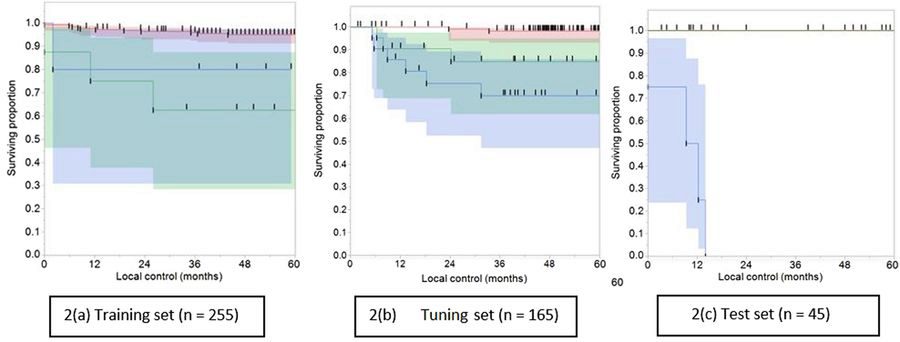Investigation of radiomics-based signature for local recurrence using primary tumor texture analysis in oropharyngeal head and neck cancer patients
January 24th, 2018
Categories: Applications, Visual Analytics, Visual Informatics

Authors
AboHashem, S., Aymard, J., Berends, J., Campbell, S., Canahuate, G., Cooksey, L., Ding, Y., Elhalawani, H., Freymann, JFarahani, K., Fuller, C.D, Kanwar, A., Kalpathy-Cramer, J., Lai, S., Marai, G.E., Mohamed, A.S.R., Ng, S.P., Perni, S., Rock, C., Vock , D., White, A.About
Radiomics is one such “big data” approach that applies advanced image refining/data characterization algorithms to generate imaging features that can quantitatively classify tumor phenotypes in a non-invasive manner. We hypothesize that certain textural features of oropharyngeal cancer (OPC) primary tumors will have statistically significant correlations to patient outcomes such as local control. Patients from an IRB-approved database dispositioned to (chemo)radiotherapy for locally advanced OPC were included in this retrospective series. Pretreatment contrast CT scans were extracted and radiomics-based analysis of gross tumor volume of the primary disease (GTVp) were performed using imaging biomarker explorer (IBEX) software that runs in Matlab platform. Data set was randomly divided into a training dataset and test and tuning holdback dataset. Machine learning methods were applied to yield a radiomic signature consisting of features with minimal overlap and maximum prognostic significance. The radiomic signature was adapted to discriminate patients, in concordance with other key clinical prognosticators. 465 patients were available for analysis. A signature composed of 2 radiomic features from pre-therapy imaging was derived, based on the Intensity Direct and Neighbor Intensity Difference methods. Analysis of resultant groupings showed robust discrimination of recurrence probability and Kaplan-Meier-estimated local control rate (LCR) differences between “favorable” and “unfavorable” clusters were noted.
Support:
National Institutes of Health:
NCI-R01-CA214825, “SMART-ACT: Spatial Methodologic Approaches for Risk Assessment and Therapeutic Adaptation in Cancer Treatment”
NCI-R01CA225190,“QuBBD: Precision E –Radiomics for Dynamic Big Head & Neck Cancer Data”
National Science Foundation:
NSF-DMS-1557559, “QuBBD Collaborative Research SMART Spatial Nonspatial Multidimensional Adaptive Radiotherapy Treatment”
Resources
URL
Citation
AboHashem, S., Aymard, J., Berends, J., Campbell, S., Canahuate, G., Cooksey, L., Ding, Y., Elhalawani, H., Freymann, JFarahani, K., Fuller, C.D, Kanwar, A., Kalpathy-Cramer, J., Lai, S., Marai, G.E., Mohamed, A.S.R., Ng, S.P., Perni, S., Rock, C., Vock , D., White, A., Investigation of radiomics-based signature for local recurrence using primary tumor texture analysis in oropharyngeal head and neck cancer patients, Nature Scientific Reports 8: 1524, January 24th, 2018. https://www.nature.com/articles/s41598-017-14687-0.pdf